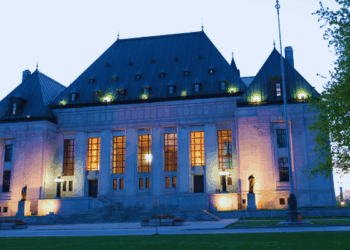This article originally appeared in the Globe and Mail.
By Ken Coates, October 2, 2023
There is a coming of age taking place in Canada, and it is passing almost entirely without notice.
Over the past few years – but with a steady recent acceleration – the Canadian government has reached negotiated agreements with Indigenous communities across the country. Settlements in the hundreds of millions of dollars have become so commonplace that new agreements seem to attract almost no public notice.
The numbers are impressive. For instance, the settlement with former students of Indian residential schools amounted to more than $5-billion, with an initial allocation of $1.5-billion. In the 2023 agreement with the 21 First Nations involved in the Robinson-Huron treaty, the Canadian and Ontario governments each committed to paying $5-billion to resolve an annuity claim that dated to the mid-19th century. (A comparable case for the Robinson-Superior First Nations is still before the court.) Elsewhere, a series of recent agreements with Saskatchewan First Nations provides more than $100-million for each identified incident of government mismanagement of Indigenous lands.
And in the largest settlement to date, the Canadian Human Rights Tribunal awarded $23-billion in personal compensation for the federal government’s failure to provide adequate family and child social services for First Nations clients; the federal court is now evaluating the agreement. An additional $20-billion to reform the welfare system is also in the works.
In times past, government expenditures of this magnitude would have unleashed a storm of protest and indignation. For the most part, though, this has not been happening. While social media is of course awash with anti-Indigenous sentiment, there have also been many negative, even hostile, comments about the government’s management of Indigenous affairs.
But the settlements and payments – some of which have arisen from court decisions – are only partially at the discretion of the Canadian government. In each instance, the Indigenous claims revolve around government inaction, malfeasance, neglect or incompetence. Most of the claims are long-standing; it is not uncommon for First Nations to contest these claims for a century or more. Governments over the decades have repeatedly stonewalled settlement processes, using their superior resources to tie up communities in decades-long and intensely complicated legal proceedings.
Nevertheless, Indigenous people fought for these claims for the simple reason that they truly – and most often accurately – believed that they were right. Knowledge keepers reminded current leaders of the historical misdeeds. Younger generations, often more angry and assertive than their parents and grandparents, demanded justice. Government heel-dragging only deepened resolve.
To its credit, Justin Trudeau’s Liberal government has, over the past five years, accelerated the settlement process and directed officials to resolve as many of the outstanding claims as possible. While many compensation issues remain unresolved, the internal blockages within Ottawa’s civil service have slowly come unclogged. More and more settlements have followed in rapid succession.
In each instance – and with solid historical, legal and political foundations – the Canadian government has begun to acknowledge that officials had acted inappropriately, in some cases even illegally, in the past. This is no small concession. For more than 150 years, the Canadian government repeatedly stole Indigenous lands without compensation, ignored clear obligations in historical treaties, and failed to exercise its full responsibilities for the care and support of Indigenous people, families and communities, even while providing superior programs for non-Indigenous people in Canada. If anyone wonders why so many Indigenous people harbour deep anger and distrust with federal authorities, the answer can be found in the legacy of deceit, illegalities and incompetence described in the settlement agreements.
Around 630 claims – a subset of the broader legal challenges facing the Canadian government and not covering most of the large-scale settlements discussed above – are in various stages of negotiation between the federal government and Indigenous communities. As of the end of August, almost 1,100 cases had been finished, with 670 ending in settlements and hundreds of others closing without a “legal obligation found.” Another 55 claims remain in litigation and 54 are before the Specific Claims Tribunal. With the Canadian government taking a less confrontational approach, the pace of final agreements should continue, if not accelerate.
Resolutions have been reached or are close at hand for a small portion of the outstanding claims against the government of Canada. Some, like the school settlements and the family and child welfare agreement, are personal compensation for government misdeeds. In other cases, the settlements go to the Indigenous governments involved. In these cases, the communities use open and public processes to determine how the funds will be allocated.
It is important that these long-standing legal impasses are finally being resolved. The settlements demonstrate that Canada is moving toward a systematic recognition of the manner in which government lawlessness shaped, limited, defined and constrained the lives of Indigenous peoples in this country.
The resolutions represent only a small step forward on the long and tortuous path to justice for Indigenous peoples in Canada. If the sums seem substantial, the costs imposed on Indigenous peoples have been much greater.
Ken Coates is a distinguished fellow and director of Indigenous affairs at the Macdonald-Laurier Institute, and professor of Indigenous governance at Yukon University.






